Culture
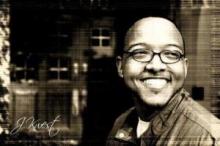
For nearly a decade, the ministry of Julian “J.Kwest” DeShazier has been an exploration in the relationship between music and faith. As artist, this Chicago native has used his unique rhythm to tell stories of deep meaning, inside and out of the church. A 2007 Holy Hip Hop Award winner, his song, “So Blessed,” was featured on the Grammy-nominated compilation Holy Hip Hop: Taking the Gospel to the Streets, and J has been celebrated as “Living Black History” by Urban Ministries International.
In 2012 he and his group, Verbal Kwest, were featured in the Sojourners, OXFAM, and Bread for the World-produced documentary The Line, providing a critical voice against poverty and violence in the U.S. A graduate of Morehouse College and the University of Chicago Divinity School, Julian currently serves as senior pastor of University Church in Chicago, and is a regular contributor to Sojourners, UrbanFaith and Kidult publications.
Editor's Note: There may be some objectional language in the beginning part of this about hour-long interview.
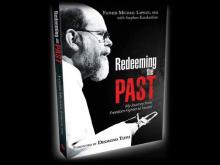
Most Americans sat glued to the TV or radio on April 15 (or raced to finish tax returns) transfixed by the horrific Boston Marathon bombing and aftermath. Nearly 100 friends of Fr. Michael Lapsley’s gathered that evening at Busboys and Poets restaurant and bookstore in Washington, D.C., to be soothed with a testimony of faith by South African Ambassador Ebrahim Rasool, soul-stirring cello music, and a transporting testimony of healing by apartheid regime bomb victim “Father Mike.”
One of my favorite newspapers in the world, the South African Mail and Guardian, reported on April 19 this way:
“Boston bombings: the marathon struggle of survival and healing … a priest from South Africa, apartheid fighter and a bomb victim himself reaches out to Americans about forgiveness … He had not planned it that way. The event was to launch his book. It had been scheduled for last October but Hurricane Sandy scuppered those plans. Instead it took place on a day when three people were killed and more than 100 injured in Boston.”
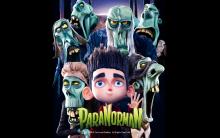
Paranorman, the stop-motion animated feature by Laika Studios just came out on Netflix instant download, so we decided to watch it for our family movie night. It's a fun film, perhaps a bit too scary for the little ones, but what really stood out for me was the surprisingly deep morality in this little film. This comes in an unlikely package since the film is about zombies and witches. Not surprisingly, if you look for Christian reviews of the film you will see many focus on warnings to stay way from the occult. Sadly, this response misses the profoundly deep moral message behind this film — one that confronts religious violence, and instead promotes a message of redemption and forgiveness. That's quite a bit of insight for a cartoon!
The premise of Paranorman is that the town of Blithe Hollow (not coincidentally set in Massachusetts, as we will see later) is about to be overrun by zombies because of the curse of an evil witch. Only Norman Babcock, an odd boy who can speak to the dead, can save the day. The movie begins by having us get to know Norman, who is emotionally isolated because his family does not understand him, and his peers ostracize and ridicule him as a "freak" at school. The only person who believes Norman is his friend Neil Downe, and overweight boy who is himself bullied.
The town is in peril because three centuries ago, an evil witch was executed, and in revenge put a curse on puritan judge and her accusers, cursing them to rise from the grave as zombies. So each year the curse of the witch must be appeased by reading from a mysterious book at the grave of the witch in order to prevent a zombie apocalypse. But this year that does not happen, and the zombies overrun the town. The townspeople and local police form the typical Frankenstein mob, complete with pitchforks and shotguns to kill the zombies. As the mob mentality grows, Norman and his motley band are threatened by the mob as well.
This is the first point where we see the film’s unmasking of "virtuous" violence: in the logic of many films, so long as someone is a "monster" or an "alien," it is okay to kill them. So we have no problem with watching mass killings of monsters or aliens in movies because ... well ... they're monsters. So you're supposed to kill them. That's what good guys do in movies. This is the unquestioned plot of hundreds of movies. As long as the Storm Troopers in Star Wars are faceless, we don't bat an eye when Luke kills one after the other. They have been dehumanized, and so it's okay to kill them all. The same is true for the Orks in Lord of the Rings, or the witch and her minions in the Chronicles of Narnia.
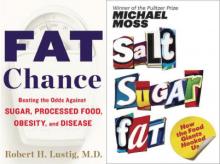
If you eat food, here are two newish books you should know about.
You may already have met Robert H. Lustig, author of Fat Chance: Beating the Odds Against Sugar, Processed Food, Obesity, and Disease (2012). Lustig is the UCSF professor whose surprisingly riveting 90-minute lecture, "Sugar: The Bitter Truth," has already had nearly 3.5 million hits on YouTube. The thesis of his lecture: it's not dietary fat that's making Americans gain weight, it's sugar. And sugar is doing much worse things than increasing our clothing size. It's setting us up for a whole range of lethal diseases that are almost entirely avoidable.
...
In Salt Sugar Fat: How the Food Giants Hooked Us (2013), Moss, a Pulitzer Prize-winning investigative reporter, tells what the food industry has been up to during the last couple of decades. Food executives, Moss says, are nervous: people are figuring out that convenience foods aren't good for them.

A while back I had an opportunity to sit down and talk with up-and-coming singer-songwriter Nataly Dawn about faith and songwriting. Dawn grew up in France, went to Stanford for undergrad, and made it big on YouTube with a duo called Pomplamoose before signing with Nonesuch records and starting her solo work.
This interview was edited for length and content.
Nataly: I have to warn you, I’m in a little bit of a food coma; I just made a really big brunch. I had probably five pancakes.
Brandon: Wow. Impressive. That’s awesome.

How far can one go in retelling a Bible story, adding things that are not in the original? In The Testament of Mary, Colm Toibin goes a long way.
His 2012 book is now a Broadway play presenting a view of the mother of Jesus so different from pious tradition that it angers some Christians, creating a “new,” intellectually and spiritually challenging Virgin Mary.
Yet in the end, Toibin’s searingly human Mary may be ultimately more accessible than the Mary of porcelain perfection set high on a pedestal.
The Irish writer, who has written about his strong Catholic childhood, imagines Mary 30 years after the crucifixion of her son. She lives as a virtual prisoner of two of Jesus’ disciples, still mourning her son’s death, bitter at what has happened since, and seeking consolation from pagan idols, which make more sense to her than what happened to Jesus.

The last Terrence Malick film I went to see was Tree of Life, in which the critically acclaimed director — and devout Christian — advised audiences to “experience [the film] like a walk in the countryside. You’ll probably be bored or have other things in mind, but perhaps you will be struck, suddenly, by a feeling, by an act, by a unique portrait of nature.” Needless to say, the film was long — extremely beautiful, but a wee bit slow.
So you can imagine the shock I felt when Malick’s latest film, To the Wonder, abruptly ended after almost two hours and I thought to myself, “Wait, it’s already over?”
To the Wonder is certainly different from its immediate predecessor in Malick’s catalogue — there aren’t any dinosaurs in his latest effort. But it does still manage to have both the look and feel of a Malick film (i.e., it intersperses a linear story with lots of fluid, beautiful cinematography shot during “magic hour” with voice overs asking deep questions), albeit one that doesn’t drift off into long montages of the creation of the universe with voiceovers almost lifted from the book of Job.
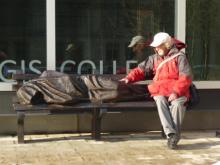
TORONTO — This homeless Jesus can barely find a home.
Canadian sculptor Timothy Schmalz notes the ironies in his latest creation, “Jesus the Homeless,” a bronze sculpture depicting the Christian savior huddled beneath a blanket on an actual-size park bench. Only the feet are visible, and their gaping nail wounds reveal the subject.
“If Jesus was watching the streets today,” Schmalz says from his home in St. Jacobs, Ontario, “I think he would want himself represented as one of the most marginalized. That’s what he said in the Gospel.”
Indeed, as Schmalz notes, Jesus calls on his followers to clothe the naked, feed the hungry, and tend to the lame. Possibly referring to himself, Jesus says, in the book of Matthew, that “the Son of Man has nowhere to lay his head.”

Bob Gersztyn owned a fine collection of 300 rock ‘n’ roll albums in 1971, the year he accepted Jesus Christ as his personal Lord and Savior. Among them were some choice 1960s vinyl from Jimi Hendrix, the Beatles, Bob Dylan, and the Mothers of Invention.
But all of a sudden, this was the devil’s music.
“I destroyed some of them with a hammer and took the rest to a used record store,” he recalled with a laugh. “I think I kept 10 classical music albums that I decided were not anti-Christian.”
Gersztyn retained his love of rock ‘n’ roll, but limited his listening to Christian rock, a genre that was just getting going in the era of the hippie-inspired “Jesus freaks” and the hit Broadway musical “Jesus Christ Superstar.”
He joined a Four Square Gospel Church in Los Angeles, enrolled in Bible college, and became a Pentecostal preacher. He also started emceeing and booking concerts for such Christian artists as Keith Green to 2nd Chapter of Acts.
Chesapeake, Virginia-based folk band The Last Bison talked with Sojourners about music, creativity, and God before their show in Washington, D.C. a while back. Be sure to listen to their recently released debut album Inheritance and catch them while they're on tour in the U.S.! Their music is definitely worth a listen.

On Saturday, the pop culture icon Justin Bieber visited the Anne Frank House in Amsterdam while on a world tour. At the end of his visit to the museum, Bieber wrote a message in the guest book.
His three-sentence message has become Big News. Sunday afternoon I checked my Huffington Post app and discovered this headline on the homepage, “Fury Erupts over Bieber’s Obnoxious Anne Frank Comment.” On Monday morning, the scandal was front page news on Yahoo.com, “Justin Bieber Gets Blasted for Anne Frank Comment.” The New York Times reports that Bieber’s comment “set off a maelstrom of criticism.”
What did Bieber write in the guestbook?

A new film about Jackie Robinson, titled “42″ — the number he wore during his historic career — tells the triumphant story of how the Civil Rights icon integrated professional baseball by playing for the Brooklyn Dodgers. But there’s a mysterious hole at the center of this otherwise worthy film.
The man who chose Robinson for his role, and masterminded the whole affair, was Dodgers General Manager Branch Rickey, played by Harrison Ford. In their initial meeting, the cigar-chomping Rickey makes it clear that whoever will be the first African-American in major league baseball will be viciously attacked, verbally and physically. So Rickey famously says he’s looking for a man “with guts enough not to fight back.” He needs someone who will resist the temptation to retaliate. Robinson agrees to go along with it.
But where did Rickey get that crazy idea and why did Robinson agree? The film doesn’t tell us, but the answers to these questions lie in the devout Christian faith of both men.

Hipsters. Not gonna lie, that was one of the first words that came to mind when Local Natives took the stage at the 9:30 Club in Washington, D.C., on Friday. I wasn’t sure whether it was guitarist Ryan Hahn’s floral skinny jeans, the luscious mustache of singer/guitarist Taylor Rice, or singer/keyboardist Kelcey Ayer’s flannel — buttoned all the way up, which seems to be the latest amendment to hipster fashion these days— or all of the above.
But then again, almost every young person these days seems to have absorbed some of the styles characteristic of hipsterdom, and Local Natives seem to do so in an unpretentious way. They’re cool. And, more importantly, their music is awesome.

March Madness ended with an exhilarating April flourish on Monday as the Louisville Cardinals defeated the Michigan Wolverines and became the new kings of college basketball after a tense 82-76 win in Atlanta.
But the euphoria that always accompanies the popular NCAA tournament may be short-lived this year, as media attention returns to an unprecedented spate of crises that have prompted grave concern about the ethics of college sports.
Chief among the outrages is the ongoing backlash over an abusive basketball coach at Rutgers University, but the sex abuse scandal in the Penn State football program also remains fresh in the public’s mind.
A litany of other alleged acts of malfeasance involving the NCAA, big-time schools, high-profile coaches and student athletes also continues to undermine the credibility of college programs, while concerns are growing about the pernicious influence of huge television contracts, especially for college football games.
Yet amid this tumult, a brand-new basketball conference composed almost entirely of Catholic schools is set to emerge this summer, which some say could point the way toward a new, or perhaps old-fashioned, model of college sports — and maybe even burnish the church’s image along the way.

Church is being reinvented. So are technology and education. And all for the same reasons.
Facebook just started moving Google’s cheese with its launch of Home. An army of upstarts in Silicon Valley is challenging the hegemony of Microsoft. Nothing is staying the same; disruption is the path to prosperity.
The reason: the marketplace is highly dynamic. New needs emerge. New products stimulate new needs. New entrants want to make a difference right away. Problems and opportunities multiply faster than bureaucratic pillars can respond.

Watching sports is not as much fun as it used to be.
I blame Jesus for that, because he just had to say:
“Love thy enemy.”
Or, as Chad Gibbs puts it in the title of his fantastic book on spirituality and sports, Love thy Rival.

(The Controversial figure Rob Bell has created another firestorm with his latest provocative book What We Talk About When We Talk About God. Raven Foundation Education Director, Adam Ericksen and Tripp Hudgins will share our thoughts on the book in this blogalogue. We invite you to join the discussion by leaving a comment.)
Sadly, this is our last post on Rob’s book What We Talk About When We Talk About God. As Tripp Hudgins stated, my previous post was a lengthy missive, and yet I feel like we have just scratched the surface of this book. I promise to make this concluding post shorter, but I’m tempted to inflict upon you the longest post ever! because there is so much in these final 30 pages.
I noticed that we haven’t made a list yet, and every blogalogue needs a list! So, to keep this from becoming the longest post ever!, I offer you the top 3 reason that Rob Bell matters.

MICROSOFT WORD is one of those computer programs that mimics the power of the human brain: It has enormous capabilities—specifically for document preparation—but we use only a tiny percentage of it, mainly to make signs for our yard sale next weekend. Naturally, we do this during office hours, since heaven knows the weekend will be busy enough.
Likewise, our brains can handle numerous complex tasks, such as learning multiple languages—a capacity I would never use, since I'm currently inside my home hiding out from the sequester—although for some reason the only thing it lets me remember from high school is that you should never talk to a football player's prom date, because you can get the snot beat out of you.
Similarly, Microsoft Word can do things you never asked for.
Recently a colleague was typing something religious for our next issue when Word suddenly offered to translate it into French, and then back into English again. Always open to distractions when typing religiously, my colleague clicked, "Well, sure, why not?" (Control/Shift/F2/blink) and the result revealed why it's often difficult to find common ground with people from other countries: They talk funny.
In some languages, for example, sounds we assume are caused by the speaker dislodging a hairball from his (or her) throat are actually words meant to communicate important messages about, say, a nation's willingness to go to war if not left alone, which the U.N. translator totally misses because he (or she) is thinking about that hairball.
ANYONE WHO LIVES in Christian community or participates in congregational life knows that it is a holy mess. A group of flawed individuals trying to do "life together" can bring out the worst in one another. But that's precisely where God calls us to be.
In our hyperindividualistic culture, it's often difficult to remember that God has created us to be in community. Christian faith and discipleship, from the beginning, have been shaped not by going at it alone but by engaging in ancient and contemporary communal experiences. The first house churches and the formation of communities among the early desert fathers and mothers, as well as today's megachurches, parachurch organizations, and new monastic groups, all point to how we long to be connected to God and with one another.
Our faith and character are refined by the miraculous gifts of grace, reconciliation, and forgiveness made available to us in community. In such a demanding and disconnected world, it is indeed a miracle when two or more gather to break bread and give of themselves in service to God and one another.
Here are some books to help us along the Way, as we seek to deepen our understanding of what it means to be in communion with Christ and with each other.
In 2009 I was co-leading a new intentional community in Washington, D.C. Our nascent group endured many struggles, including interpersonal issues, conflicting visions and goals, and the involuntary removal of a community member. How I wish The Intentional Christian Community Handbook: For Idealists, Hypocrites, and Wannabe Disciples of Jesus (Paraclete Press), by David Janzen, was available when we first began our journey.
I
The crumpled woman pushes through the door
and sees your plump limp limbs
held tight in my buckled arms.
She remembers holding
such sweet eternity.